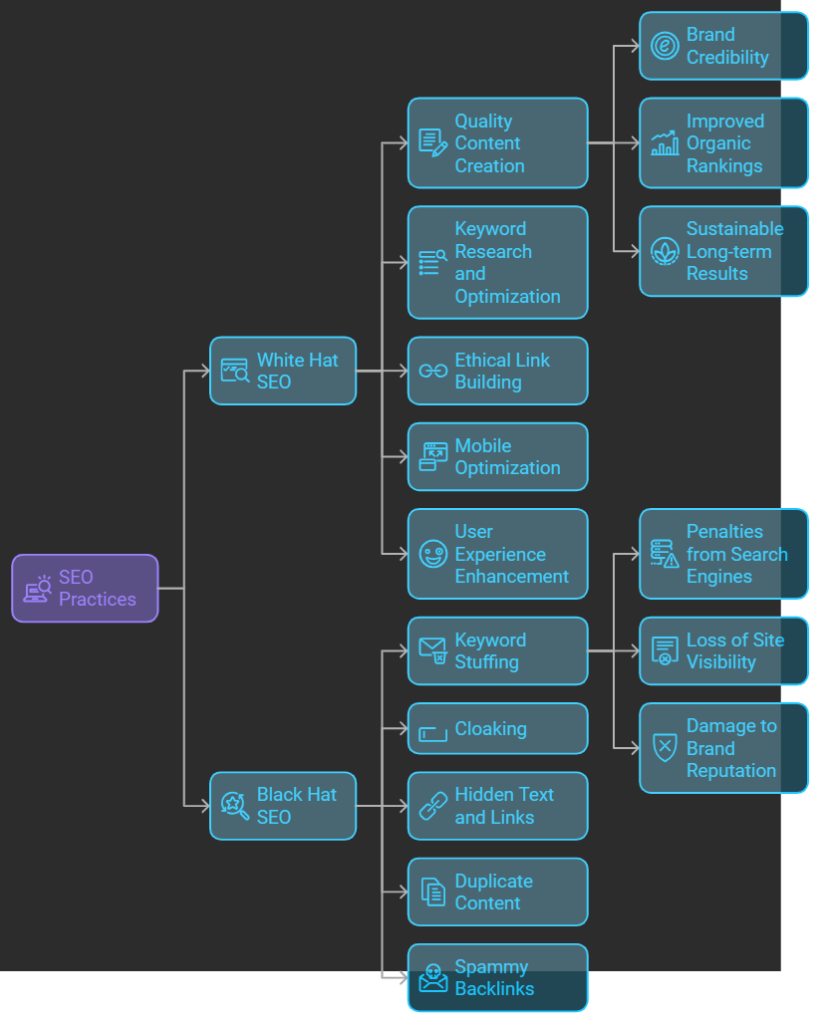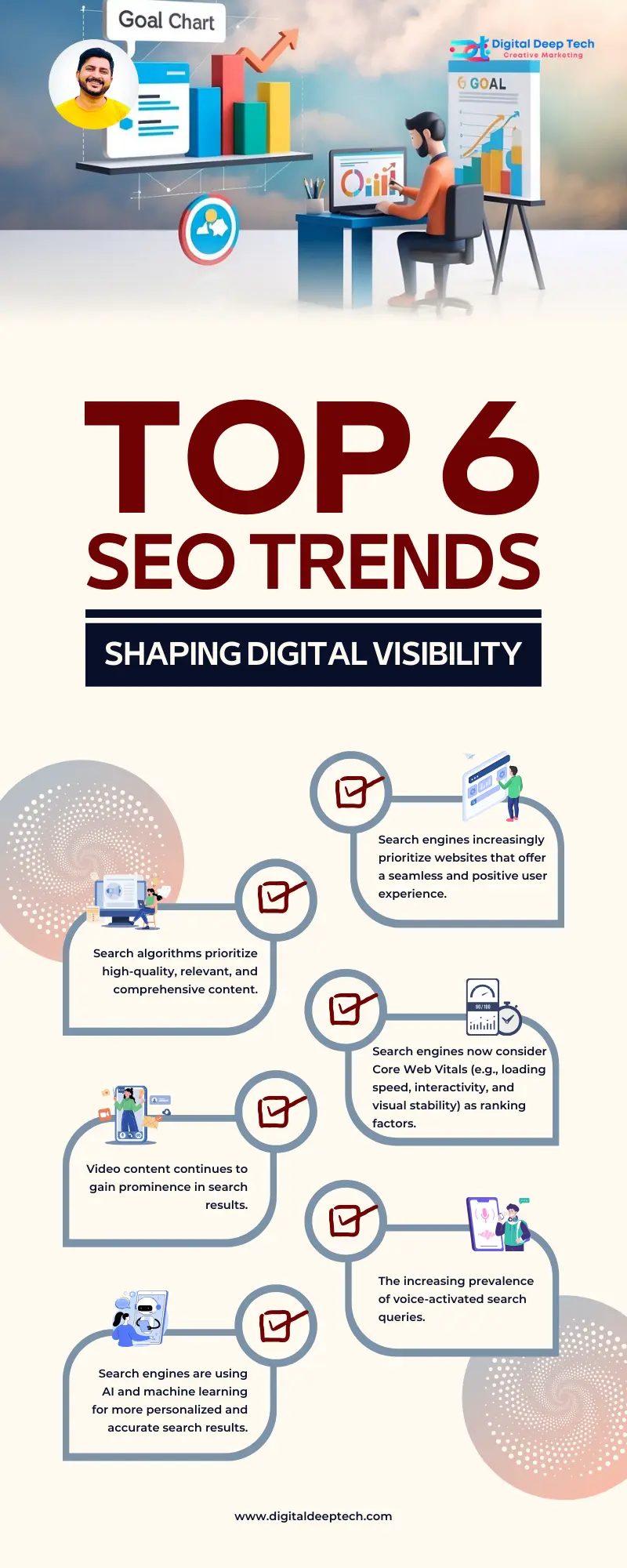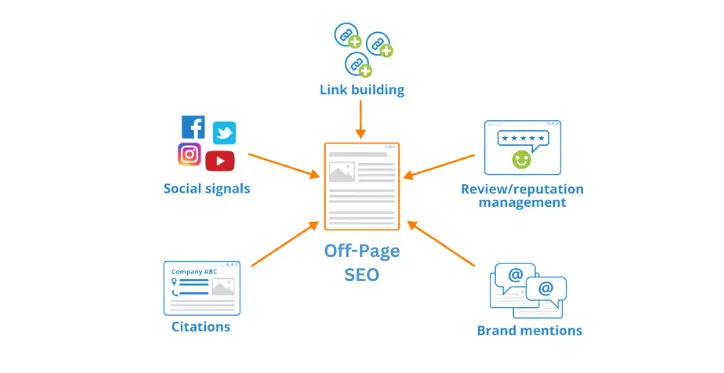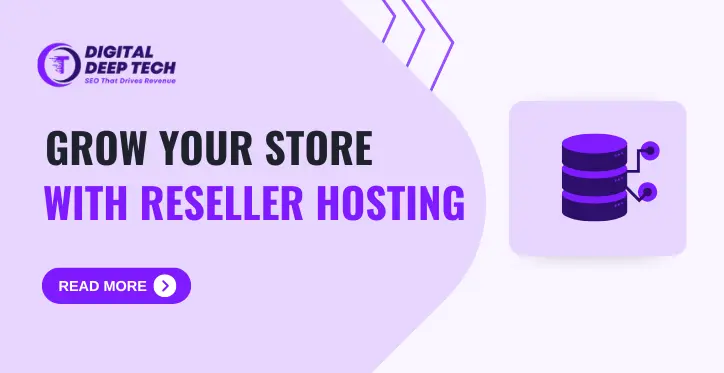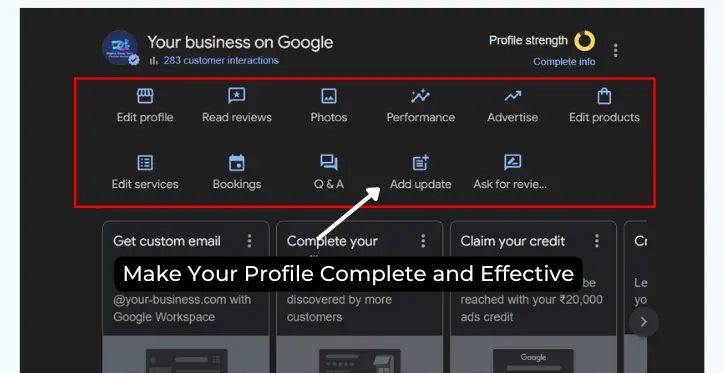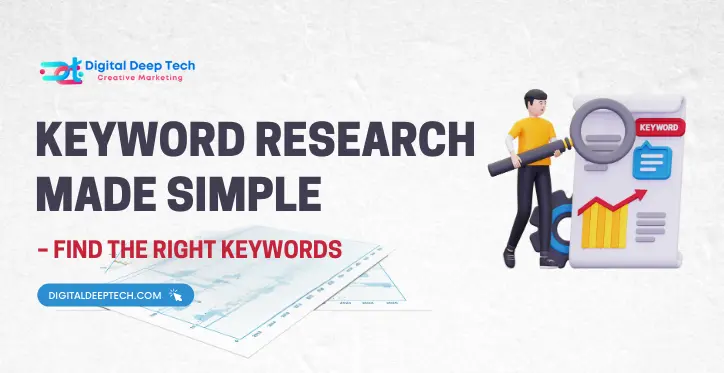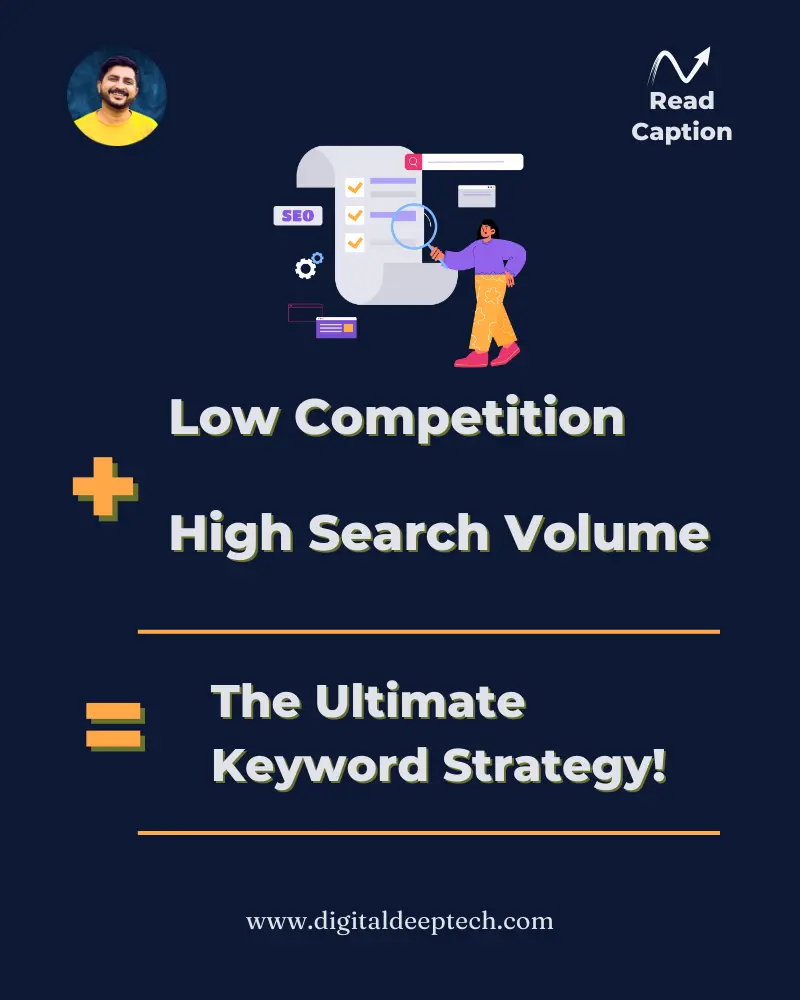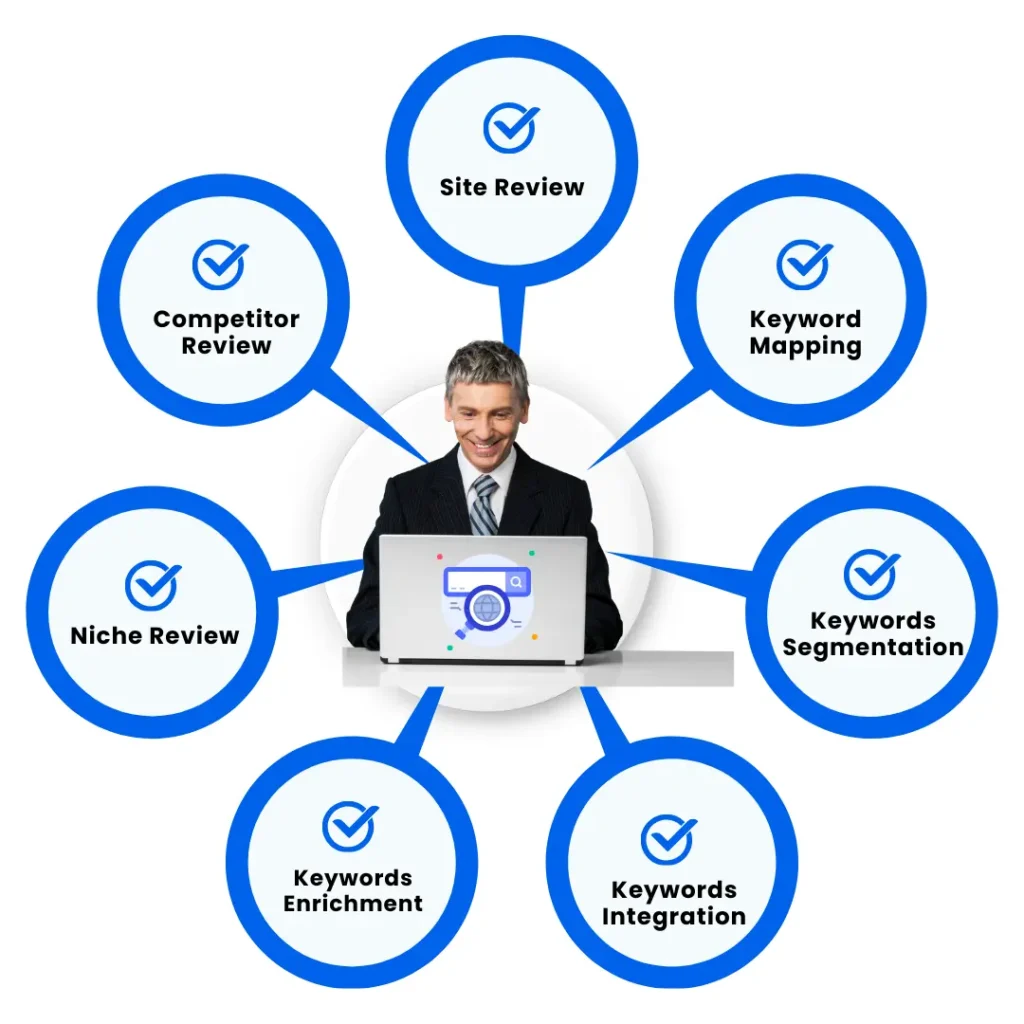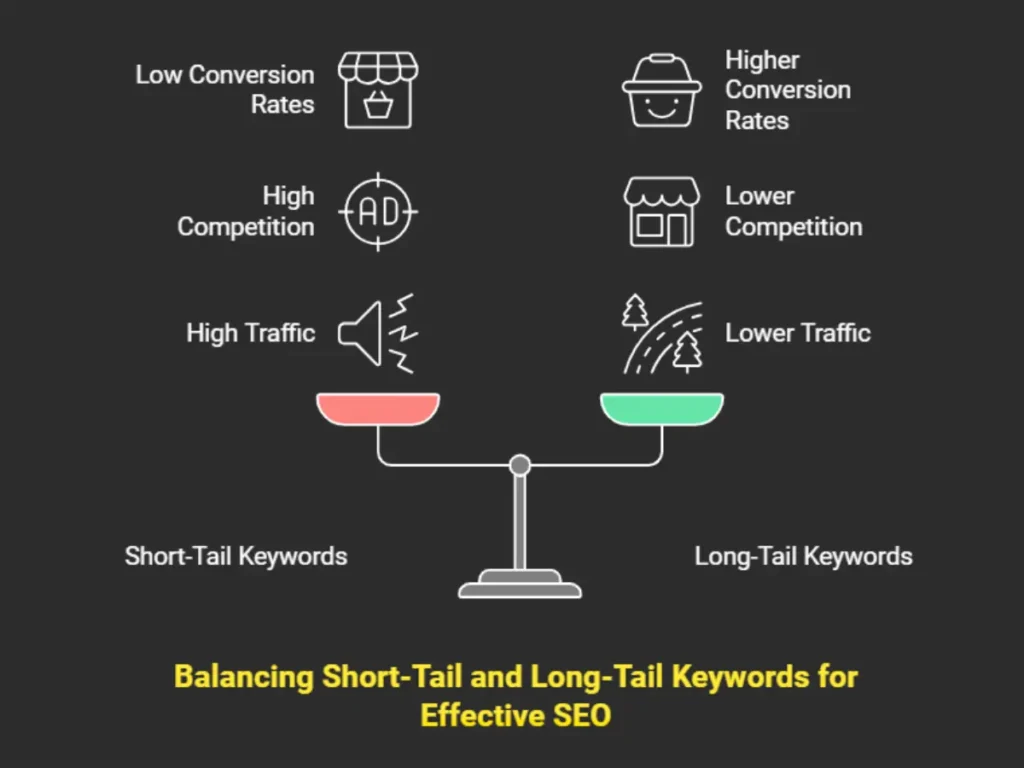Top 6 Advanced Keyword Research Ideas and Tips

Table of the content
Introduction
In such a dynamic world of SEO, one has to go the extra mile in search of staying ahead of rivals by indulging in more than simple keyword research. Advanced keyword research is highly required while designing effective SEO strategies, particularly when AI tools are assisting in the process. This is how, being a digital marketer and the founder of Digital Deep Tech, I have seen an advanced keyword research services transform the performance of any website.
Why Keyword Research is Important in SEO
Keyword research is the real foundation of SEO. It lets you get into the minds of the audience and create your content in such a way that it gets surfaced over these types of queries. Accordingly, this shall pave the way to be listed on top of SERPs and the right niche traffic to your website. According to ahrefs, 90% of pages get zero organic search traffic from Google, which clearly shows the requirement of an effective keyword strategy.
AI Keyword Research Tools
Keyword research has been highly improved due to artificial intelligence, which has brought strong tools in place to make the process easier and more operative. AI-driven tools can go through a huge set of data to extract worthy keywords, trends, and competitive levels to speed up the process of keyword research with no error. Using the machine learning algorithm, these affordable SEO tools provide insights that may be left out by the conventional process, putting you in a good position in the SEO game.
That is, in my use, the AI tool maximizes the efficiency in adopting and executing my SEO strategies. This results not only in saving lots of hours but also in going a step further to provide deep insights into keyword performance, which is very instrumental in developing a robust SEO strategy. Artificial intelligence in integrating the keyword research process would empower one to uncover opportunities hidden from plain sight by normal manual research alone.
Definitely!
Turning competitors' keyword research to your advantage
One of the best ways through which you can find low-competition topics is to analyze your competitors’ strategies for keywords. Competitor keyword analysis may turn up highly useful information related to low-competition keywords for which your rivals are ranking. With such information, you will be able to identify the gaps in your SEO strategy and take the opportunity to target less competitive keywords that are driving huge traffic. Deepak Sharma, I have used this approach often to fine-tune my SEO tactics to stand out over my competition.
Step-by-Step Guide to Competitor Keyword Research
1. Type a competitor's domain name into SEMrush.
First of all, enter one of your competitor’s domains into SEMrush. This advanced keyword research and competitor analysis tool truly provides you with an overview of what your competitor’s keyword strategy looks like. During your search through their domain, you’ll get to see results based on the top keywords and traffic sources of that domain. This serves as a basis for further digging into low-competition keywords.

2. Go to the Top Pages Report.
Visit the Top Pages report in SEMrush. This view will present you with the pages on your competitor’s website that are driving the most traffic. Ambiguous content within these pages might provide insight into the kind of keywords attracting such traffic. Look at the KD scores, particularly—this will help in seeking those keywords that are uncompetitive but valuable.
3. Filter the traffic with low-difficulty keywords

Filter this again with the low-difficulty keywords ranking for the pages. Furthermore, filter it according to the keywords indicated with low difficulties according to their KD scores—exactly the low-competition keywords that your competitors are ranking for and getting traffic from. This will be key in landing opportunities where you can outrank your competitors on similar or better content.
4. Filter Pages with 500+ Estimated Monthly Search Visits
Refine your search a little more by filtering on those pages that at least sustain 500 monthly visits on the search. This will assure you that you target a keyword under considerable traffic, and hence, it will be a potential way to guide your SEO effort. At this stage, the most important analysis of keyword rankings will help you focus on the most effective and relative terms.
5. Identifying Low-Competition Topics
In identifying low competition, one has to know what should be understood as high and what low competition is. The low-competition keywords tend to be more specific, are less saturated, and give one a higher possibility of ranking with less effort. Advanced keyword research strategies involve analyzing these keywords for suitability with your content and SEO goals.
Low-Competition vs. High-Competition Topics
- Low-competition topic: “Eco-friendly pet supplies for small dogs”: There might be less competition for this niche and a more specific topic.
- High competition topic: “Pet Supplies”: A very wide, highly competitive topic with far too many well-established players in this particular niche.
Successful keyword selection for SEO requires the ability to make a difference. Advanced research and keyword tracking are due to refining a strategy, focusing on all of the most promising opportunities that are low in competition.
Let's Discuss Your Project
Get a free one-month consultation and share your vision for digital marketing with us.
Find and Expand Unique Keyword Ideas
1. Keyword Modifiers
Indeed, keyword modifiers are great ways to expand the keyword list and also to find unique keyword ideas. You can try out any number of words or phrases with the core keywords, which can be targeted with the niche topics that remain left out during other searches. Keyword modifiers help you refine that search to precise and relevant information for your target audience. Speaking from my experience that truly increases the power of SEO and helps to aim at a focused audience.
2. Helping to Identify Effective Modifiers
It helps you to find effective modifiers that will correctly turn generic keywords into easily targeted long-tail keywords. In general, they are just specific, low-competitive, long-tailed keywords that drive traffic to your website. For instance, instead of trying to rank for the generic term “SEO tools,” you could target a specific keyword phrase such as “best affordable SEO tools for small businesses.” In so doing, this approach not only increases your probability of ranking but also pulls through a much more relevant traffic cohort that is more willing to convert.
Step-by-Step Guide
1. Look at competitors' top pages.
Let’s start by looking at your competitors’ Top Pages report. This very developed keyword research and competitor analysis tool will help you notice which modifiers are working well for your competitors. When you look at the top-performing pages, you’re going to get some valuable information on which ones are driving the traffic with the keyword modifiers so that you’re able to tailor your strategy around it.
2. Use SEMrush Keyword Magic Tool

Next up, we’ll want to take a closer look at keyword modifiers with SEMrush’s Keywords Explorer. Inside their advanced keyword research tool, you’re allowed to research variations of your main keyword, which includes a combination of modifiers that can improve your overall SEO strategy. You can insert these modifiers inside your keyword research to reveal unique keyword ideas and to reach more in the SERPs.
Example in the keto niche
Let’s take an actual case study in the keto niche to understand how the keyword modifiers operate.
Fast-Food Options That Are Low in Carbs
When operating within the keto niche, using too competitive a keyword like “low carb fast food” is too broad. That is when you can use modifiers to focus your search. For example, targeting “best low-carb fast food options near me” or “affordable low-carb fast food choices for busy professionals” gives one a better target. In fact, in this example, advanced keyword research and keyword tracking enable you to find niche topics that resonate with your audience and drive traffic to your site.
Advanced Keyword Research Tips
Use applied strategies to secure a position in advanced keyword research. Deepak Sharma here; over the years, one thing is sure: applying these advanced tips and keyword research strategies does, in real terms, help you find some invaluable keyword opportunities that you might have otherwise overlooked. You can find this by refining the keyword strategy based on a myriad of tools and techniques for better SEO results and gaining a competitive advantage.
1. Find long-tail keywords that are less competitive from partial competitors and SERPs.
To come up with less common keywords, you can use partial competitors and analysis of SERPs. Identify what your competitors haven’t extensively targeted yet holds potential. These less common keywords often turn up low competition levels and are thus high in relevancy, making them useful to be added to the SEO strategy. This approach will help you rank better on such niche terms.
2. Get keywords using GA4 on site searches?

GA4 gives top insights into user interactions on the website, including keywords used in site searches. An analysis of the site search queries would bring to the surface keywords relevant to your audience but not so easily fleshed out from other more traditional methods of research. GA4 helps understand the user intent and refines the keyword strategy according to the actual search behavior.
3. Google Search Console Can Help You Find Uncovered Search Queries

Google Search Console is another such tool that is going to lay down a multitude of uncovered search queries for you. It specifically shows zero search volume keywords and long-tail queries that users enter to find your content. Analyzing queries will unfold what your audience is in search of, which can help you reshape your keyword strategy to better meet these needs.
4. Think of Grouped Zero Search Volume Keywords
Although zero search volume keywords may appear to be small, the fact that they can be grouped often uncovers other keyword clusters that are useful to think of them as. These types of keywords typically would reflect any emerging trends or small niche topics that are packed with future potential.
Observing such groups of keyword terms can help you find opportunities related to content creation and optimization that may not be apparent otherwise.
5. Check Google Trends to Find Trending Topics with Future Potential

Google Trends is one very good tool you can use to track emerging keyword trends. It’s quite easy to spot rising topics just by searching for interest over time and to know that they are viable future topics. This keeps you ahead of trends and allows you to include relevant keywords in your content before they become mainstream.
6. Research forums like Reddit and Quora for fresh keyword ideas.
Forums like Reddit and Quora present some of the best ways to find new keyword ideas. These forums give some insights into the kinds of questions and topics that people have in mind, thus triggering some good keywords that can be of great help to you too. Exploring threads and questions related to your industry could set you up for getting new keywords and content ideas that are valuable and engaging.
Top 6 AI-Driven Keyword Research Tools
The fast-changing SEO world has a mandate that comes with using the best keyword research tools in 2024 to ensure you are ahead of the game. Not only do these programmatic SEO tools give the needed insight into keyword performance, competition, and trends, but they also considerably assist in refining strategies to achieve better and higher rankings.
With various keyword research tools integrated into the workstream, one is bound to apprehend multiple opportunities and duly optimize content in the right manner. Here’s an overall view of some of the top keyword research tools powered by AI.
1. Semrush: Features and Benefits
Semrush is one of the most advanced keyword research tools with several features and advantages. It can offer a lot in terms of a fully functional set of tools for keyword analysis, including keyword difficulty scores, search volume, and competitive analysis. The advanced features of Semrush enable one to identify whether high-potential keywords can be used and tracked over time. A tool is invaluable in developing robust SEO strategies because it can clearly show competitor keywords and traffic sources.
2. Google Keyword Planner: Credibility and Data Source
Google Keyword Planner is one of the most commonly used tools available to conduct keyword research. It gives great information on search volume, trends for any particular keyword, and competitiveness. It forms an integral part of Google Ads and really gives insight into the accuracy of how keywords work during the running of paid search campaigns and can easily be extrapolated and adapted to focus on organic SEO. You’ll get detailed keyword analysis and be able to make data-driven decisions for improvement while using Google Keyword Planner.
3. ExplodingTopics.com: Search for Trending Keywords
ExplodingTopics.com will show you what topics are popular before they get mainstream. By analyzing search data and identifying the keywords growing fast, users can target topics with great future potential. This can come in handy in keeping up with industry trends: devising trending keywords within your content strategy.
4. Keyword Surfer: Search Results for Keyword Ideas
Keyword Surfer is a browser extension that helps you find keyword ideas right from search results. It uses a unique process among keyword research methods to show related keywords and their volumes right under Google’s search results. One can make constant discoveries of additional ideas in keywords and refine their strategies out of the up-to-date search trend. Keyword Surfer is the thing to quickly gauge keyword potential and easily bake the ideas into your content.
5. Ubersuggest: Generate Keywords and Data
Ubersuggest is a keyword research tool that provides details in generating keywords. This entails elements of search volume, keyword difficulty, levels of competition, and noting expensive keywords your SEO strategy will capture. There are content ideas and keywords recommended for off-target terms, thus making this tool all-round and very extensive in advanced keyword research and tracking.
6. Ahref: Detailed Keyword Data and Analysis
Ahrefs is a well-known tool for detailed keyword data and analysis. It’s one of the biggest keyword databases, giving you insight into how difficult a keyword is and what the search volume might be, which would give an idea about the potential traffic. It helps to identify key strategies in competitor research through keyword research and analysis. Ahrefs will help you increase your keyword strategy and overall SEO performance.
Top 9 Suggestions for Advance Keyword Research
The set of keywords is the only element that can drive traffic and improve the search engine ranking for your website. In this blog, I will take you through a detailed keyword research process. I am Deepak Sharma, a digital marketer and founder of Digital Deep Tech. As the presentation begins, I’ll share my insights and experiences.
1. KGR Calculator
How to find good keywords? Keyword Golden Ratio is a simple keyword research formula that helps you find the best keywords to rank for. It helps you identify a keyword’s popularity, competition and difficulty so that you can make a smart decision on which keyword to target.
The keyword Golden Ratio is a ratio between keyword allintitle Result and Search Volume. The higher this number is, the more likely your website will rank well in Google. The lower this number is, the more likely your website will rank poorly in Google.

In Detail, The KGR is the ratio of the number of Google results that have the keyword phrase in the title divided by the monthly search volume, where the search volume is less than 250. Visit here to use the KGR calculator.
- Good Keyword: If KGR is less than 0.25
- Better Keyword: If KGR is between 0.25 to 1.00
- Bad Keyword: If KGR greater then 1.00
2. Niche Keyword Research
It is not easy to find niche-specific keywords. There are possibilities that without any niche keyword research you might end up targeting all the wrong and irrelevant keywords, which all the way lead to poor rankings and low traffic.
First, prepare a list of the kinds of keywords you would like to target for your site. Such keywords, included in on-page optimization, pave the way for more and more people to land on your site, getting you more traffic and better rankings.
Facts: Forrester says that companies that practice niche keyword research are three times more likely to get better organic traffic.
3. Establish a clear goal.
Lack of clear SEO goals will take your keyword strategy out of the way. Setting ambitious goals without realistic expectations will lead to frustration and unmet targets.
Define clear SEO goals for yourself. Start by setting a single, ambitious, but easily achievable goal with a deadline of 3-6 months from now. This guarantees that every move in the procedure of keyword research is geared toward the goal.
From Personal Experience: Setting realistic and clear goals is the step I always start with when running my SEO campaigns. This gives direction and focus to the strategy.
4. Importance of Keyword Relevance in Keyword Research
Non-relevant keywords mislead the target audience. Improper keywords raise the bounce rate and lower the level of engagement.
Come up with a bunch of keywords related to the text. If you are writing about dogs, place keywords like “dogs” or “dog care.”
My Personal Experience: Starting with SEO, I used broad keywords, which later I realized did not work perfectly as the specific ones.
5. Understand the intent behind the search.
You may be targeting the keywords inefficiently by missing the intent of the search. Not knowing what kind of information your audience is looking for will cause your content to not satisfy them.
The search intent takes the shape of keyword queries. Find free keyword research tool – Google Keyword Planner to locate the confluence of search query topics and keyword categories.
Personal Insight: Now I know that search intent is my game-changer when it comes to my SEO strategy because that tells me what my audience wants to read.
6. Find keywords that have low competition.
Highly competitive keywords are hard to rank. Targeting the most competitive keywords, SEO performance would go really bad with very low visibility.
Find low-competition keywords with high search volume. Use Google Adwords Keyword Planner and SEMrush. Low-tail keywords have less competition and a higher conversion rate.
Statistics: Targeting long-tail keywords increases organic traffic by up to 70%.
7. Seed Keywords
If you’re starting keyword research without any grounds, it can become exhausting. Without Seed keywords, your research might head in the wrong direction.
Solution: Seed keywords are simply a tiny list of terms. It would trigger new content ideas. A pair of a few two words that engines think brings the related keywords.
Example: The keyword research and keyword tools are like some seed keywords that build your keyword strategy ground strongly.
8. Find long-tail keywords
If long-tail keywords are not targeted, then lots of traffic gets missed out. Giving attention solely to head terms will make you miss really valuable traffic.
Long-tail keywords are less competitive and convertible. They target relevance in your content.
Statistics: Studies, as documented by Moz, show that long-tail keywords cover 70% of search volume. Therefore, long-tail keywords matter to SEO.
9. Tracking and refining your keyword strategy
A keyword strategy that is static over time can turn ineffective. Not adjusting could lead to lost potential and demoting in rankings.
Keep checking and updating your keyword strategy. Metrics and feedback analysis will help you fine-tune your approach.
My Experience: That helped me keep up to date with trends and keeps my keyword strategy current to enable me to stay at the very top of search rankings.
Advance Keyword Research with Digital Deep Tech
How to find the best keywords that rank quickly and easily on Google? Here, you can get affordable keyword research services that match your needs! Book an online appointment with our SEO and keyword research expert, Deepak Sharma, who will help you create a keyword list and action plan to boost your online presence within 3 to 6 months. Let’s start the discussion by clicking on Free SEO Consultation.
Conclusion
In other words, effective keyword research is one essential element of successful SEO. Using these steps, you will identify the best keywords to use and take your site to the top of search engine results. If you have any questions or need further clarification, book an free consultation at Digital Deep Tech.
FAQs
What is competitor keyword research all about?
In simple words, it is the process of scrutinizing one’s words adopted by the rest of the competitors in their SEO and PPC campaigns to realize which terms drive traffic toward their websites.
How Do AI-Powered Tools Help to Improve Your SEO?
Competitor keyword research helps you identify keyword opportunities, understand market trends, and build a more effective SEO strategy by learning from your competitor’s successes and mistakes.
For keyword research, how do I find out about my competitors?
Identify competitors by searching for your primary keywords on search engines, analyzing who ranks on the first page, and using something like SEMrush, Ahrefs, or SpyFu to discover top competitors.
What are the best tools for performing competitor keyword research?
Utilize popular SEO tools such as Ahrefs, SEMrush, or Moz. By dropping the domain of your competitor in those tools, you can get an idea of their top-ranking keywords, keyword gaps, and terms that drive traffic.
What could be done with discovered keywords?
Use these keywords to optimize your content, create new content targeting these terms, and build a more competitive SEO strategy by filling gaps and leveraging untapped keyword opportunities.
How often should I do competitor keyword research?
Ideally, you’ll want to do it at least quarterly—or more often if needed—to stay current with what’s happening within your space.
Will competitor keyword research help me with paid search campaigns?
Yes, this analysis of their keywords can show you what sort of terms are working well in paid search campaigns. That in turn, with this information about them, can help you optimize your PPC strategy and possibly lower costs.
What are keyword gaps, and how do I find them?
This is an instance where the competition has their website ranking for a keyword, but you do not have it. You will find this out using tools such as Ahrefs and SEMrush, which compare your site to those of your competitors.
What will I do with the keywords that I found during competitor analysis?
Prioritize your keywords based on search volume, relevancy to the business, competition levels, and the estimated potential in generated traffic and conversions. You can use tools like Ahrefs or SEMrush to make an assessment of the recommendations.

About the Author
Deepak Sharma is the founder of Digital Deep Tech and a renowned SEO and digital marketing expert with over a decade of experience. Passionate about helping businesses enhance their online presence, Deepak specializes in creating SEO strategies that drive traffic and generate leads.
Top 6 Advanced Keyword Research Ideas and Tips Read More »


